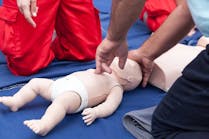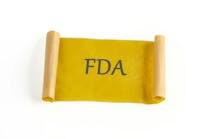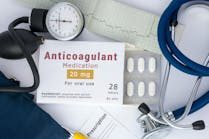The drugs/pharmaceutical transfer segment of the medical drones market is anticipated to increase significantly in the near future, according to a new market research report announced by Global Market Insights. Medical drones efficiently deliver medications in rural facilities as they can sense and avoid obstacles. The report shows emergency medical services segment was valued at $40 million in 2018 and its authors say it will continue to grow in coming years as a lack of access to medicines during critical cases continues as one of the leading causes of death in underdeveloped regions. World Medical Drones Market will surpass $399 Million by 2025, as technological advancements in medical drones will improve their efficiency that should increase their preference during emergency cases.
Medical drone delivery records also were set by Johns Hopkins researchers as they successfully transported human blood samples across 161 miles of desert. Throughout the three-hour flight, the on-board payload system-maintained conditions, such as temperature, ensuring the samples were viable for diagnostic analysis upon landing. In a report about the findings, published in the journal American Journal of Clinical Pathology, the investigators say the findings add to evidence that unmanned aircraft are an effective, safe, and timely way to quickly transport medical samples from remote patients to laboratories with advanced diagnostic capabilities.
“Drone air transport will be the quickest, safest and most efficient option to deliver biological samples to a laboratory whether it be in a rural or urban setting,” says Timothy Amukele, MD, PhD, in a study reported by MedicalDrones.org. “We don’t need to fix 20th Century problems, such as no roads, poor roads or driving vehicles through crowded urban streets to improve patient care. Logistical inefficiencies are an enemy of patient care. Drones will take patient care into the 21st Century by making patient diagnoses quicker and more efficient.”
The study demonstrated real-world long-distance transport of samples involving several modes of transportation. Eighty-four samples were collected in pairs at the University of Arizona in Tucson and driven 76 miles to an airfield. One sample from each pair was loaded on the drone, which flew them 161 miles. The samples were then driven 62 miles to the Mayo Clinic in Scottsdale, Arizona.
The aircraft was controlled via a radio link between the onboard flight computer and the ground control station. The flight was performed in restricted airspace at an unpopulated military aircraft test range, cleared of other air traffic. Samples were packed and transported according to IATA guidelines.
During transport, the samples were in a temperature-controlled chamber designed by the Hopkins team. The chamber uses electrical power from the aircraft to maintain the samples at room temperature during warm or cold weather. The device is lighter than an equivalent amount of ice, the current method of temperature control. Additionally, the chamber can warm the samples in cold weather.
Following the flight, all samples were transported to the Mayo Clinic in Scottsdale, Arizona. Each pair of samples was compared to check for differences between the flown and not-flown sample. Results from sample pairs were similar for 17 of the 19 tests. Small differences were seen in Glucose and Potassium, which do also vary in other transport methods. The authors said they suspect the differences seen in the test arose because the samples not-flown by drone were not as carefully temperature controlled as the flown samples in the temperature-controlled chamber.
The Johns Hopkins team previously studied the impact of drone transportation on the chemical, hematological, and microbial makeup of drone-flown blood samples and found that none were negatively affected. Previous studies involved drone flight distances up to approximately 20 miles. This study examines the effects of drone transportation over longer distances, more than 160 miles, and significantly longer time periods that require environmental controls. The team plans further and larger studies in the U.S. and overseas.
“My vision is that we engage drone technology to fly over challenges presented by self-limiting ground transportation systems,” says Amukele. “So, our hospitals will have diagnostic results far more quickly. And, when a first responder arrives to the scene of an accident, he or she will be met by a medical delivery drone carrying the correct blood product.”





